INTRODUCTION
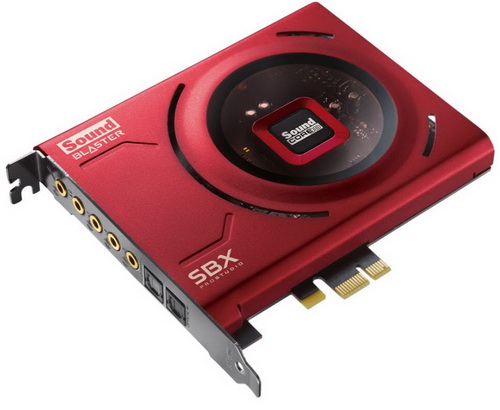
One of the things i never could wrap my head around is the number of people who even today use motherboard onboard sound cards to watch movies, listen to music and of course play games. Now the reason behind my surprise is that even back in the early 90's when i got my very first 80386 system i paired it with a 16-bit sound card and yes even though back then onboard sound wasn't a thing I’d still get a standalone model later on. Today of course things are vastly different and so it makes even more sense to grab a standalone sound card instead of using the motherboard one. Creative labs used to own pretty much 100% of the PC audio market back in the 90's and even though that percentage did drop a bit when the first onboard sound cards made their appearance right now, they are still the number one sound card manufacturer in the world and after testing all their latest models (AE-5 Plus/AE-7/AE-9) today with me i have their latest one, the Sound Blaster Z SE.
Creative is a worldwide leader in digital entertainment products. Famous for its Sound Blaster® sound cards and for driving the multimedia revolution - which established a user base of 400 million - Creative drives digital entertainment with cutting-edge audio solutions that include premium wireless speakers, wireless headphones, powerful audiophile-grade digital amplifiers and next-generation home-theatre systems. Aiming at the new mobile networked generation by bridging the worlds of the computer, smartphones, and tablets, Creative continues to reinvent the Sound Blaster, with its ground-breaking Sound Blaster Roar series and USB-audio class of products such as the Sound Blaster X7.
As revealed by its name the Sound Blaster Z SE is a slightly updated version of the award winning and highly successful Sound Blaster Z audio card Creative released back in late 2012. Under the red aluminum EMI shield both models we find the same Sound Core3D quad-core audio processor along with the CA0113-4AG HDA bus controller by Creative, CS4398-CZZ digital to analogue converter (DAC) by Cirrus Logic, two MAX97220A amplifiers by Maxim (one for headphones and one for speakers), 8416CN optical receiver again by Cirrus Logic, nichicon fine gold (FG) capacitors (some Sound Blaster Z batches didn't feature these) and the JRC 2114 and 4556A op-amps for the headphones and line-out functions. Thanks to the above combination of hardware the Sound Blaster Z SE (just like the original Sound Blaster Z) supports 24-bit stereo (direct) playback at 192kHz (surround playback is as always 24-bit at 96kHz) with an SNR of 116dB and is also capable of handling studio-grade headphones with an impedance of 600 ohms. Now what has changed between models is primarily on the software side so via the Sound Blaster Commander software the brand new Sound Blaster Z SE supports SBX gaming profiles, EQ settings (for both the speakers and the microphone for clearer audio) and the usual Dolby Digital Live and DTS Connect options long enjoyed by the entire AE lineup.
SPECIFICATIONS AND FEATURES

PACKAGING AND CONTENTS
The new Sound Blaster Z SE is shipped inside a black box that has a product picture at the front right over the main product features.
Some of the card’s audio features are listed on the right side of the box.
On the left side we see a picture of the cards front area (connections) right over the minimum system requirements and the contents of the bundle.
At the rear of the box Creative goes into detail about the main product features in 4 languages.
Once you open the box you will see the card wrapped inside a clear plastic bag and placed in a formed piece of cardboard.
Not much bundled with the Sound Blaster Z SE, just the warranty information paper, quality assurance paper and the quick start guide.
THE SOUND BLASTER Z SE
Just like with the original Sound Blaster Z the SE model features a very nice red aluminum EMI shield over its components.
This may not be very important to some people but mATX/mITX owners will be happy to learn that the Sound Blaster Z SE is less than 2/3s in size compared to other cards like the NU Audio Pro by EVGA (or the AE-7/9 models by Creative).
Again, thanks to a clear plastic section on the EMI shield we see the Sound Core3D heatsink.
A HD audio front panel connector is located at the rear of the card as seen above.
Unfortunately, since the Sound Blaster Z SE is considered an mid-range model it doesn't feature a backplate.
At the front we find the 3.5mm microphone/line-in port, 3.5mm headphone out port, three 3.5mm 5.1 line out ports and the TOSLINK (SPDIF) optical out/in ports.
Removing the EMI shield reveals the black PCB and its components.
Here we find the CA0113-4AG HDA bus controller, nichicon fine gold (FG) capacitors, 8416CN optical receiver and CS4398-CZZ digital to analogue converter (DAC) by Cirrus Logic and the JRC 2114 and 4556A op-amps.
SOUND BLASTER COMMAND
This is the 4th time I’ve seen the Sound Blaster Command software and so typically the main tab showcases the currently selected SBX (gaming) profile and also allows you to adjust the acoustics of the card.
Again, you can quickly scroll through all 24 available gaming profiles (each profile has different acoustic engine settings).
Inside the equalizer tab Creative has placed the bass and treble sliders and of course the equalizer with a grand total of 36 available presets (some are also available in the SBX profiles tab).
The playback tab allows you to take control of everything in regards to the connected speakers including their configuration (stereo/2.1/4.0/4.1/5.1 surround), size (desktop/bookshelf/tower/custom) and calibration based on their position/distance.
You can also enable direct mode (ideal mode especially for listening to music), use one of the 7 available filters and set the desired audio quality (32-bit/96kHz for 5.1 surround analog, 24-bit/96kHz for optical and 24-bit/192kHz for analog direct).
Everything related to recording either via the digital in or the what you hear feature is placed in the recording tab.
For FPS gamers (especially multiplayer ones) the scout mode could be the difference between winning or losing since it does enhance effects like footsteps and weapon fire.

If you happen to be using the S/PDIF output with an A/V amplifier then the Dolby enhancements found in the encoder tab could be useful.
Just like with the Windows volume mixer the mixer tab allows you to adjust the volume of both outputs and the input.
Via the settings tab you can also check for software updates, enable/disable the software from starting with Windows and reset the software to its factory settings.
Finally, from the lower left of the Sound Blaster Command software you can quickly choose between speaker and headphones output.
CONCLUSION

As always i used two stereo speaker sets (2.0) and two surround sound speaker sets (5.1/7.1) to test the card at hand and the results weren't a surprise really. Just for the record in order to have a more complete opinion i used the Sound Blaster Z SE with several games (World of Warships, Cyberpunk 2077, Forza Horizon 4, Star Wars Squadrons and Death Stranding), numerous Blu-Ray UHD movies and even uncompressed FLAC audio tracks. Starting with direct stereo mode there's a good gap in audio clarity and accuracy between the Sound Blaster Z SE and cards like the Sound Blaster AE-9 and the NU Audio Pro but that gap slowly drops when comparing the Z SE with the AE-5 Plus or the AE-7. Yes, the AE-5 Plus and AE-7 do have a small lead especially in highs and even bass but you'll only notice if you actually pay attention and at high volume levels. That's not the case however with the AE-9/NU Audio Pro models which offer much richer mids, highs and even lows (depends on the input however - you may not notice this with games, not as much as UHD movies and uncompressed FLAC tracks). Where things change drastically however is when all cards are connected with surround sound systems, yes there's a slight change in how these sound cards behave (more emphasis for example in highs or mids) but quality and accuracy is not that much different. Granted you may hear sounds from the left/right and rear channels slightly clearer when using the AE-9 and/or the NU Audio Pro cards but this is by no means a game changer. Audio quality, accuracy and volume levels also vary when using a pair of headphones with these cards with the AE-9 in the lead followed by the NU Audio Pro and the AE-7 close behind. Granted both the AE-5 Plus and the Z SE do a good job with most low/mid-range headphones but you can clearly hear the difference in detail and volume especially when using a good pair of headphones.
Since the Creative Sound Blaster Z SE is meant to replace its predecessor its launch retail price tag couldn’t be far and so you can currently find it for USD109.99 inside the USA (Amazon.com) and for 99.99Euros inside the EU (Amazon.de). Now since I never did get the first Sound Blaster Z I can’t really compare it to the Z SE (both the SBX and EQ profiles however should change/improve the entire experience), what I can say however is that the latter is massively better than any onboard sound card today. I also can’t avoid talking about the bundled microphone of the original Sound Blaster Z which for some strange reason Creative didn’t include this time over. Honestly, I wouldn’t mind much at any other point in time but now with so many people working remotely that microphone could be very useful. This however for me is the sole serious drawback of the Creative Sound Blaster Z SE and since it does offer very good audio quality and a plethora of features without breaking the bank it clearly deserves the Golden Award.

PROS
- Build Quality
- Audio Clarity / Detail
- Good 3D Positioning Audio
- Creative 3D Enhancements
- Analog & Digital Surround Sound Outputs
- Sound Blaster Command Software (Available Settings)
CONS
- No Bundled Microphone (Unlike the Original Sound Blaster Z)
- No Backplate

 O-Sense
O-Sense





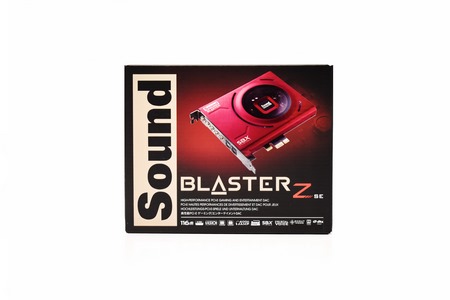















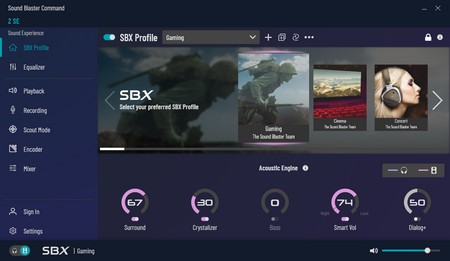

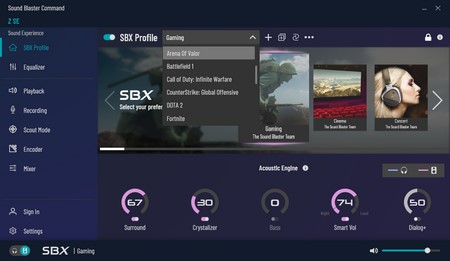







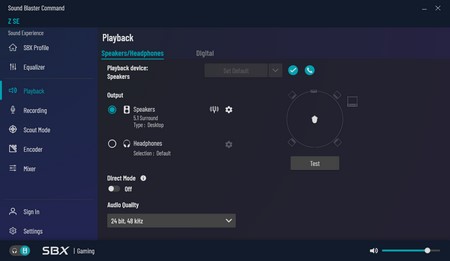














.png)

